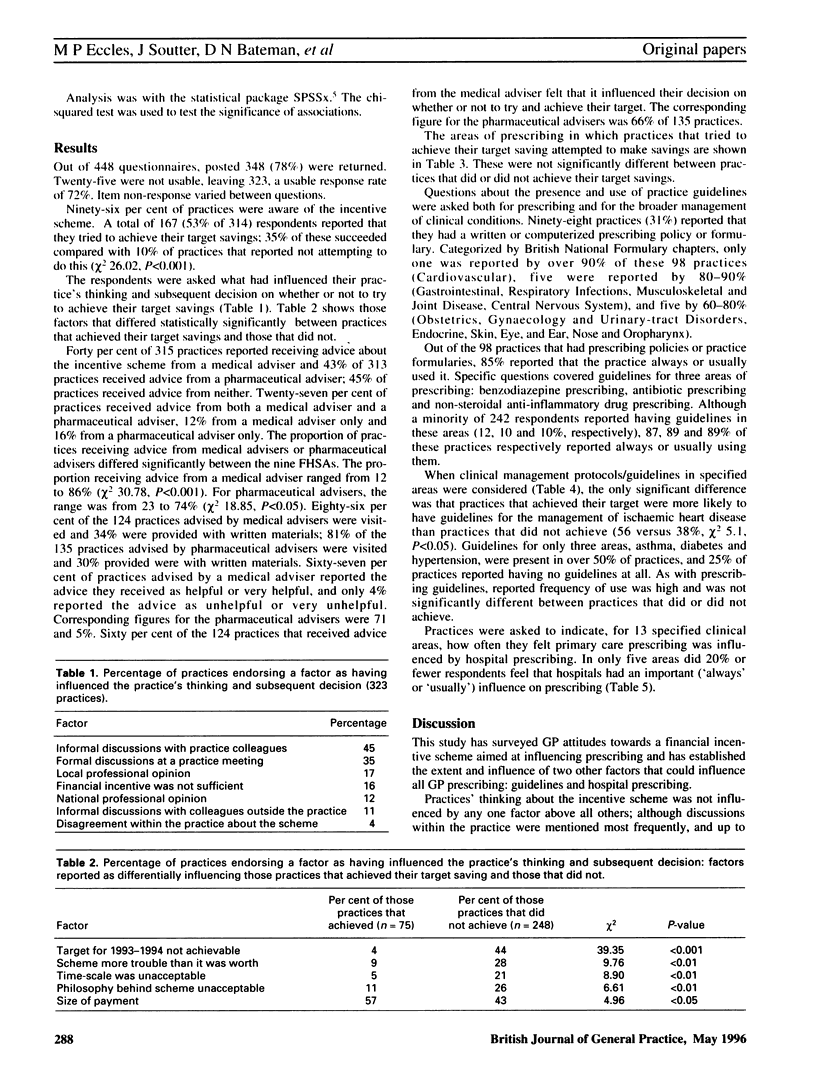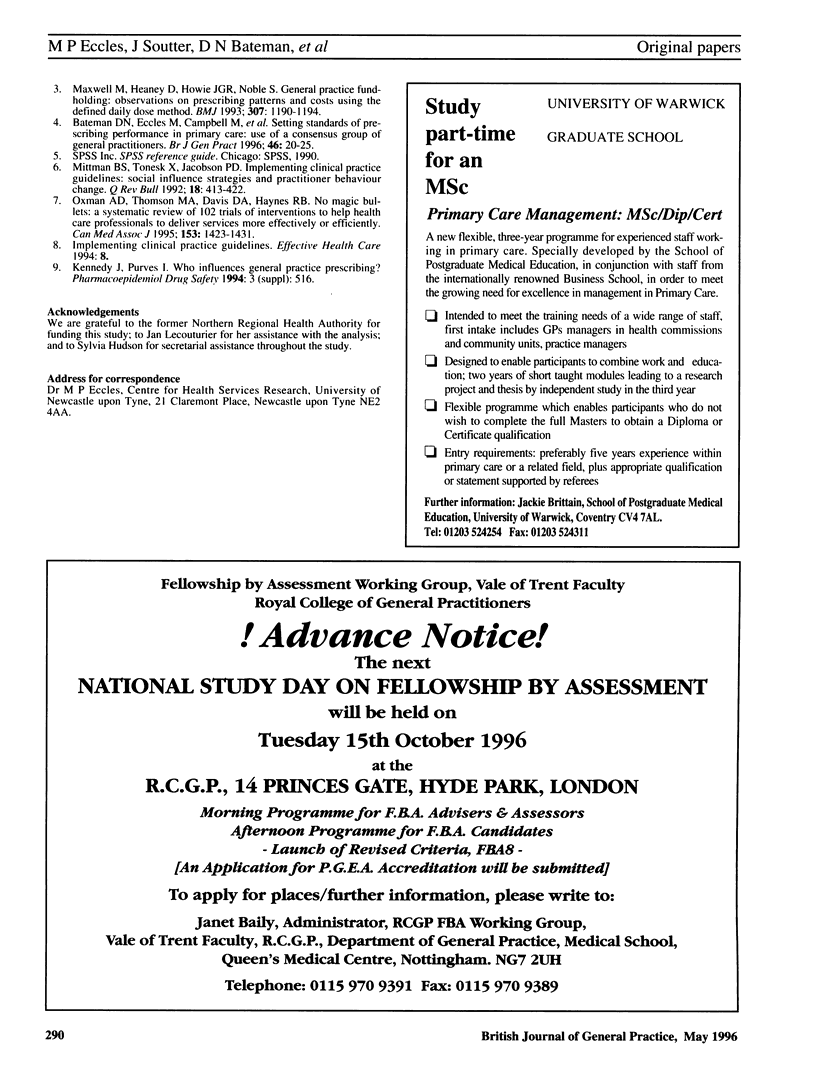Abstract
BACKGROUND: The experience from general practice fundholding suggests that financial incentives may influence prescribing; guidelines and hospital prescribing are two other suggested influences. AIM: A study was undertaken to establish general practitioners' attitudes to a financial prescribing incentive scheme, the presence and use of guidelines, and the influence of prescribing initiated within secondary care. METHOD: A postal questionnaire survey of non-fundholding general practices in the former Northern Region was conducted. RESULTS: Practices' thinking and subsequent decisions about the incentive prescribing scheme were most often influenced by discussions within the practice (45%). Those practices that achieved their savings under the incentive scheme were less likely than those not achieving savings to feel that the target was not achievable, the time scale was unacceptable, and that the philosophy behind the scheme was unacceptable. Forty-five per cent of practices received advice from neither a medical nor a pharmaceutical adviser; 27% of practices received advice from both, 12% from a medical adviser only and 16% from a pharmaceutical adviser only. Of the practices that tried to make their target savings, 91% intended to increase generic prescribing; fewer than one-third of practices mentioned any other measure. Prescribing guidelines were reported by a minority of practices, although reported rates of use were high when these were present. Clinical guidelines for three conditions, asthma, diabetes and hypertension, were present in more than 50% of practices; 25% of practices had no clinical guidelines. Hospital prescribing was reported as 'always' or 'usually' influencing prescribing for diabetes by 57% of respondents, ischaemic heart disease by 55%, peptic ulceration by 49%, asthma by 42% and hypertension by 39%. CONCLUSIONS: General practitioner prescribing is influenced by a complex web of factors, with no single factor pre-eminent. To understand this area further, there is a need to take each of these areas and ascertain the match between doctors' perceptions and actual practice.
Full text
PDF



Selected References
These references are in PubMed. This may not be the complete list of references from this article.
- Bateman D. N., Eccles M., Campbell M., Soutter J., Roberts S. J., Smith J. M. Setting standards of prescribing performance in primary care: use of a consensus group of general practitioners and application of standards to practices in the north of England. Br J Gen Pract. 1996 Jan;46(402):20–25. [PMC free article] [PubMed] [Google Scholar]
- Bligh J., Walley T. The UK indicative prescribing scheme: background and operation. Pharmacoeconomics. 1992 Aug;2(2):137–152. doi: 10.2165/00019053-199202020-00006. [DOI] [PubMed] [Google Scholar]
- Bradlow J., Coulter A. Effect of fundholding and indicative prescribing schemes on general practitioners' prescribing costs. BMJ. 1993 Nov 6;307(6913):1186–1189. doi: 10.1136/bmj.307.6913.1186. [DOI] [PMC free article] [PubMed] [Google Scholar]
- Maxwell M., Heaney D., Howie J. G., Noble S. General practice fundholding: observations on prescribing patterns and costs using the defined daily dose method. BMJ. 1993 Nov 6;307(6913):1190–1194. doi: 10.1136/bmj.307.6913.1190. [DOI] [PMC free article] [PubMed] [Google Scholar]
- Oxman A. D., Thomson M. A., Davis D. A., Haynes R. B. No magic bullets: a systematic review of 102 trials of interventions to improve professional practice. CMAJ. 1995 Nov 15;153(10):1423–1431. [PMC free article] [PubMed] [Google Scholar]


